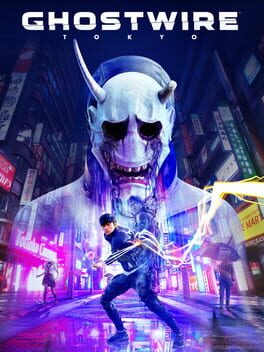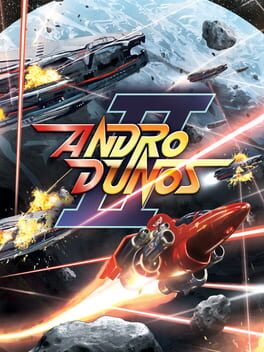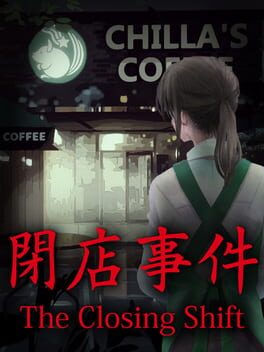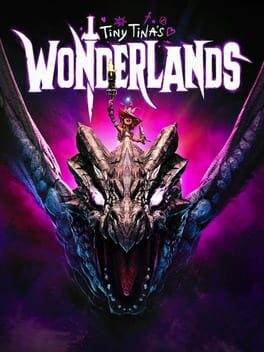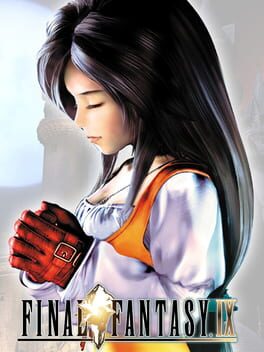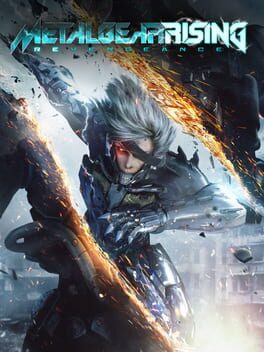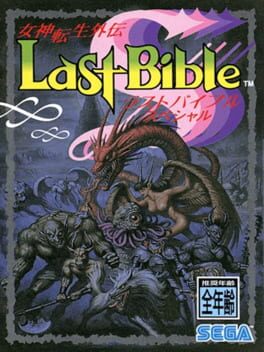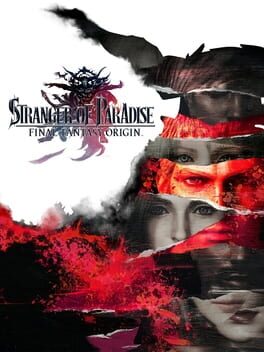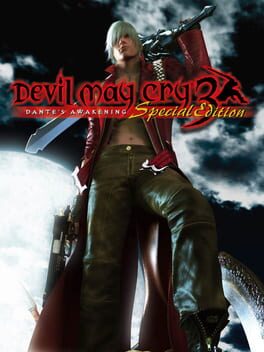dunnoiguess
52 Reviews liked by dunnoiguess
Ghostwire: Tokyo
2022
In development for 3 years i'd say they did an amazing job with this game because this is one of the prettiest games i've ever played storywise and graphics wise and for a team that i haven't heard about, the work they've done is phenomenal.
The graphics look fantastic and it just feels like im watching a movie during the cutscenes and with that fantastic graphics come the environments which i feel like they really nailed it and it's like i'm really there exploring.
Gameplay is actually really fun and it's basically aggressive finger pointing and hand gestures and dog petting, one thing i did find kind of a bit repetitive is souls collecting which is needed for you to earn some money and EXP and it's fun for the first time but after playing it for a while it can get tiring.
Despite the aggressive hand gestures gameplay, this game's story is really beautiful and i can get real invested and the chemistry between the two characters KK and Akito is actually nice sadly i wished that the main protagonist's sister get more screentime but she's more so a plot device meant to get the main protag going but i enjoy it.
Overall this game is great and despite some scenes in the game made me feel like im tripping on acid it's very fun i definitely recommend it
The graphics look fantastic and it just feels like im watching a movie during the cutscenes and with that fantastic graphics come the environments which i feel like they really nailed it and it's like i'm really there exploring.
Gameplay is actually really fun and it's basically aggressive finger pointing and hand gestures and dog petting, one thing i did find kind of a bit repetitive is souls collecting which is needed for you to earn some money and EXP and it's fun for the first time but after playing it for a while it can get tiring.
Despite the aggressive hand gestures gameplay, this game's story is really beautiful and i can get real invested and the chemistry between the two characters KK and Akito is actually nice sadly i wished that the main protagonist's sister get more screentime but she's more so a plot device meant to get the main protag going but i enjoy it.
Overall this game is great and despite some scenes in the game made me feel like im tripping on acid it's very fun i definitely recommend it
Ghostwire: Tokyo
2022
When Ghostwire: Tokyo was revealed in 2019 it's creative director at the time, Ikumi Nakamura, arguably stole the show with her bubbly personality, eccentric, glowing energy, and memorable poses that spawned countless fanarts, edits and memes. Ikumi, who previously worked as lead art designer for excellent The Evil Within 1 & 2, would then shortly thereafter leave Tango Gameworks under health concerns.
Three years later in March 2022, she announced her new studio; UNSEEN, stating that: "I decided that rather than having a company where games get made, I realised that I’d like to have a studio where artists get together and have fun making games together and where they can be creative".
Cut forward to the release of Ghostwire. A game that lures you in under the guise of a gonzo, deftly original, urban spirit hunting horror, but in reality is a trojan horse for the exact type of open world, fluff ridden schlock I swore off years ago. Aesthetically competent and stylishly atypical; an uninspired, derivative, generic, by the numbers slog in every other regard. To sum up in a few words: it's all fur coat and no knickers.
Now, I don't pretend to know Ikumi's true thoughts and feelings regarding the development process of this title, and there was a time where she would refer to it as her baby, but one has to wonder how someone as passionate as her and the rest of the team at Tango could've ever found joy working on this Ubisoft-lite that just smacks of wasted energy and potential from beginning to end. And thats when her departure and subsequent founding of UNSEEN starts to make a lot more sense.
Maybe I'm just reading what I want to read, but her new mission statement comes off to me as a rejection of the philosophy and circumstances that leads to these focus tested into oblivion, visionless games. Only time will tell. Shinji Mikami too, there's no timeline where I could imagine him making a game remotely similar to this. I get the vibe he looked at it once, said "sounds cool" and went back to his office for 5 years. We need the man back in the directors seat now more than ever.
Ghostwire Tokyo is an amalgamation of everything open world games get wrong, and for it to release just a month after Elden Ring only serves to cement everything that game got right. Ghostwire did not have to be an Elden Ring, a Sable, or a BOTW. Absolutely not. However, the amount of hand holding and unsubtle, downright blunt player guidance on display here for a world so small feels silly. Even sillier next to Elden Ring's world which is monumental in comparison and doesn't at any point hold the hand of the player like a child being walked across an empty road, instead it simply allowed you to BE in that world. Have a little faith.
In Ghostwire you can't even open the map without having all control snatched from you as you're quite literally forced to look at every single bad side quest, tower, and objective one by one that just became available for you to (hopefully) ignore later in the game. It also features all the crap I kinda thought we moved past already like the aforementioned towers, fog on the map, and miserable side quests that end half the time in a large arena where you have to fight like 20 dudes and that's it.
And I had to laugh every time they got brave enough (which is often enough to comment on) to take all your powers away and leave you with that twiddly little bow as if anyone wants that. As if your game's combat wasn't rudimentary enough, panging of half assery even with the powers that all feel the same, that each serve the same purpose. As if slowly walking back and clicking on the same 5 or 6 enemy types slowly walking towards you wasn't boring enough. As if.
Tango Gamework's first miss, and what a miss. There's nothing to see here, move along.
Three years later in March 2022, she announced her new studio; UNSEEN, stating that: "I decided that rather than having a company where games get made, I realised that I’d like to have a studio where artists get together and have fun making games together and where they can be creative".
Cut forward to the release of Ghostwire. A game that lures you in under the guise of a gonzo, deftly original, urban spirit hunting horror, but in reality is a trojan horse for the exact type of open world, fluff ridden schlock I swore off years ago. Aesthetically competent and stylishly atypical; an uninspired, derivative, generic, by the numbers slog in every other regard. To sum up in a few words: it's all fur coat and no knickers.
Now, I don't pretend to know Ikumi's true thoughts and feelings regarding the development process of this title, and there was a time where she would refer to it as her baby, but one has to wonder how someone as passionate as her and the rest of the team at Tango could've ever found joy working on this Ubisoft-lite that just smacks of wasted energy and potential from beginning to end. And thats when her departure and subsequent founding of UNSEEN starts to make a lot more sense.
Maybe I'm just reading what I want to read, but her new mission statement comes off to me as a rejection of the philosophy and circumstances that leads to these focus tested into oblivion, visionless games. Only time will tell. Shinji Mikami too, there's no timeline where I could imagine him making a game remotely similar to this. I get the vibe he looked at it once, said "sounds cool" and went back to his office for 5 years. We need the man back in the directors seat now more than ever.
Ghostwire Tokyo is an amalgamation of everything open world games get wrong, and for it to release just a month after Elden Ring only serves to cement everything that game got right. Ghostwire did not have to be an Elden Ring, a Sable, or a BOTW. Absolutely not. However, the amount of hand holding and unsubtle, downright blunt player guidance on display here for a world so small feels silly. Even sillier next to Elden Ring's world which is monumental in comparison and doesn't at any point hold the hand of the player like a child being walked across an empty road, instead it simply allowed you to BE in that world. Have a little faith.
In Ghostwire you can't even open the map without having all control snatched from you as you're quite literally forced to look at every single bad side quest, tower, and objective one by one that just became available for you to (hopefully) ignore later in the game. It also features all the crap I kinda thought we moved past already like the aforementioned towers, fog on the map, and miserable side quests that end half the time in a large arena where you have to fight like 20 dudes and that's it.
And I had to laugh every time they got brave enough (which is often enough to comment on) to take all your powers away and leave you with that twiddly little bow as if anyone wants that. As if your game's combat wasn't rudimentary enough, panging of half assery even with the powers that all feel the same, that each serve the same purpose. As if slowly walking back and clicking on the same 5 or 6 enemy types slowly walking towards you wasn't boring enough. As if.
Tango Gamework's first miss, and what a miss. There's nothing to see here, move along.
Ghostwire: Tokyo
2022
This game is like a throwback to 7th gen open world design in all the worst ways.
It's... playable, but you've probably played a lot of other titles that are more satisfying, more rewarding to play than this. It also lacks a lot of the pacing, the cool setpieces and enemy encounters that made the Evil Within games fun, from the same developer.
And the story is weak, it lacks the emotional core to make you care for the long run, despite the alright start. It tries to say something about grieving and moving on, but all of it feels really thin, none of the characters get enough to explore what they're going through.
It's... playable, but you've probably played a lot of other titles that are more satisfying, more rewarding to play than this. It also lacks a lot of the pacing, the cool setpieces and enemy encounters that made the Evil Within games fun, from the same developer.
And the story is weak, it lacks the emotional core to make you care for the long run, despite the alright start. It tries to say something about grieving and moving on, but all of it feels really thin, none of the characters get enough to explore what they're going through.
Andro Dunos II
2022
It feels good to be playing shmups again.
So I'm not very familiar with the original Andro Dunos, but I saw a review for Andro Dunos II on youtube and the polished sprite art caught my eye and saw it was available on Steam so I decided to give this game a try myself.
Andro Dunos II is a classic horizontally-scrolling shmup that looks and feels very authentically 90's, evoking neo-geo game vibes with its brand of audio and visual effects. This is a four-button shmup where you can shoot (fortunately with autofire), switch between four different weapon types, and activate a hyper shot.
Powering up is done by collecting items which drop from specific enemies which either add a point to your currently-equipped weapon or your two side pods (shot-blocking options with limited health and a sub-weapon respectively). Defeating enemy formations will also drop blue items that give extra score and allow you to invest an extra upgrade point in a weapon or side pod of your chocie, and there are exactly 30 of these items per stage.
This all sounds fairly standard but the mechanics are elevated by the aforementioned hyper shot. If you aren't on a cooldown, pressing the hyper shot button will make your currently equipped weapon super powerful for around 5 seconds and the weapon will drop down to the lowest power level afterwards for the duration of the subsequent cooldown. This hyper shot mechanic encourages the player to enter a satisfying rhythm of phasing in and out of hyper shot durations, and switching to different weapons during the cooldowns. Learning to time your hyper shots is a big part of routing through the stages and bosses and there's a definite feeling of elation from taking down what you thought were spongy bosses quickly with well timed hyper shots.
It helps that the game's level and boss design on the whole is very competent. Each of the game's 7 stages feel distinct and retain their fun factor during subsequent playthroughs. Everything feels challenging but fair - all boss attacks, hazardous terrain and enemy formations coming from behind are telegraphed in good time. While the game might be a bit too tricky for beginners, I think Andro Dunos II would be a good shmup for players with a bit of shmup experience looking to get into the more traditional side of the genre.
There's also a great boss rush mode that's unlocked after beating the game for the first time, and if you finish the boss rush you unlock two bonus stages that are allegedly remakes of stages 1 and 3 from the original Andro Dunos from 1992. I would have liked a few more bonus stages, or maybe even challenge missions in the style of Blue Revolver, but it's always a good sign when devs are willing to add any amount of bonus content to a shmup in the first place.
All things considered, Andro Dunos II is a flashy and fun horizontal shmup that should appeal to anyone with an interest in the genre, but at the same time it doesn't really do much to push the envelope like many other indie/doujin shmups have done in the last decade or so. The lack of co-op and online leaderboards also hurts.
I'd recommend getting the Steam version if possible because I've heard that the PS4 and Switch versions suffer from noticeable input lag and sprite flickering issues, whereas I didn't experience any of those issues playing on PC.
So I'm not very familiar with the original Andro Dunos, but I saw a review for Andro Dunos II on youtube and the polished sprite art caught my eye and saw it was available on Steam so I decided to give this game a try myself.
Andro Dunos II is a classic horizontally-scrolling shmup that looks and feels very authentically 90's, evoking neo-geo game vibes with its brand of audio and visual effects. This is a four-button shmup where you can shoot (fortunately with autofire), switch between four different weapon types, and activate a hyper shot.
Powering up is done by collecting items which drop from specific enemies which either add a point to your currently-equipped weapon or your two side pods (shot-blocking options with limited health and a sub-weapon respectively). Defeating enemy formations will also drop blue items that give extra score and allow you to invest an extra upgrade point in a weapon or side pod of your chocie, and there are exactly 30 of these items per stage.
This all sounds fairly standard but the mechanics are elevated by the aforementioned hyper shot. If you aren't on a cooldown, pressing the hyper shot button will make your currently equipped weapon super powerful for around 5 seconds and the weapon will drop down to the lowest power level afterwards for the duration of the subsequent cooldown. This hyper shot mechanic encourages the player to enter a satisfying rhythm of phasing in and out of hyper shot durations, and switching to different weapons during the cooldowns. Learning to time your hyper shots is a big part of routing through the stages and bosses and there's a definite feeling of elation from taking down what you thought were spongy bosses quickly with well timed hyper shots.
It helps that the game's level and boss design on the whole is very competent. Each of the game's 7 stages feel distinct and retain their fun factor during subsequent playthroughs. Everything feels challenging but fair - all boss attacks, hazardous terrain and enemy formations coming from behind are telegraphed in good time. While the game might be a bit too tricky for beginners, I think Andro Dunos II would be a good shmup for players with a bit of shmup experience looking to get into the more traditional side of the genre.
There's also a great boss rush mode that's unlocked after beating the game for the first time, and if you finish the boss rush you unlock two bonus stages that are allegedly remakes of stages 1 and 3 from the original Andro Dunos from 1992. I would have liked a few more bonus stages, or maybe even challenge missions in the style of Blue Revolver, but it's always a good sign when devs are willing to add any amount of bonus content to a shmup in the first place.
All things considered, Andro Dunos II is a flashy and fun horizontal shmup that should appeal to anyone with an interest in the genre, but at the same time it doesn't really do much to push the envelope like many other indie/doujin shmups have done in the last decade or so. The lack of co-op and online leaderboards also hurts.
I'd recommend getting the Steam version if possible because I've heard that the PS4 and Switch versions suffer from noticeable input lag and sprite flickering issues, whereas I didn't experience any of those issues playing on PC.
The Closing Shift
2022
Final Fantasy IX
2016
I'm probably the only one of the reviews that actually played the game to completion. Yes, I played the entire game and finished it. I beat this crap. I'm just as surprised as you are.
Before I start, I will say that I played the VANILLA english patch, on the Gearsystem emulator. There is a different version of the patch that gives some QOL changes, but I did NOT play on that. I played essentially the same game that was released in 1995, with the exception of it being in English instead of Japanese.
First of all, don't play this game. Please don't. There is no reason for you to play this. It is by far the worst game I've ever played. If you'd like to know why, read on.
So, this game starts off fairly funny. It looks like crap, the music is god awful, the combat is terrible, the level design is boring and obnoxious on purpose, there is little to no story, and the game design/gameplay in general is unfair, unbalanced, and untested, but over time I had slowly began to lose my mind, and this game cemented it's place in my "Games that made me depressed" list here on backloggd. I'll explain why.
First, I'll dive into the graphics for this game. Keep in mind, I've never played a GameGear game, and I have little to no exposure to the console, so I am not familiar with it's limitations. I will not dock points for the menus, since they are certainly due to hardware limitations, but I do think it is cool that you're able to change the background colour to almost anything you'd like. The sprite work in this game is pretty good, and though there are quite a few reused sprites with recolours, there is a decent amount of variation and cool looking sprites. Unfortunately, this is the only good thing I can say about the game. The dungeon visuals are always the same in any dungeon, the only difference being what colour the bricks are. I'd imagine this has to do with cartridge storage limitations, but it's still a valid complaint.
I'd give the graphics a ★★★☆☆, considering the limitations they had.
Next, I will talk about the music in this game. There are only two battle themes. The random battle theme, and the boss theme. The random battle theme is one of the worst tracks I’ve ever heard in a released published game. It sounds like someone took their head and smashed it onto a keyboard a few times and called it a day. The boss theme isn’t much better, though I did enjoy the first 5 seconds of it, it quickly shows the same amount of quality as the random battle theme. There’s only about one track in the entire game that I’d consider passable, but even then, it was just passable.
Overall, I’d give the music a ★☆☆☆☆, due to there being at least one PASSABLE song.
Now the combat. Here I will be talking about the battle system specifically, not what the encounters themselves are like, that will be touched upon during the game design portion. The combat is quite generic, and likely similar to Digital Devil Story: Megami Tensei, though I haven’t played that to say for sure. Your party consists of 6 members, ranging from highest to lowest on a list, in which you queue up moves/actions your party will take before they are all executed, determined by yours and the enemy’s speed stat. You’d think that it would follow other MegaTen games that have this system, and would have enemies prioritize the party members at the top of your party list working their way down, but it seemed a lot more random to me, and even by the end I could still not determine if it was truly random or not. Your party members are able to use skills called “Extra” skills, which exist in other old MegaTen games. In this game, they are all skills that are multi-target, consisting of damaging skills to a few status inducing ones, and some instakill skills. These do not take any MP to use, so they are very useful throughout the game. In fact, I rarely ever used true MP costing moves during battle, instead keeping the MP for healing spells.
Overall, I’d give the battle system/combat a ★★★☆☆, due to it being passable, and expected from playing other old MegaTen games, but nothing to really talk about.
Fourth, I will talk about the level design in this game. The level design is very weird to me. There are a large amount of floors that are basically just symmetrical, which is quite boring and lame. Unfortunately, those floors are quite desirable once you make it further into the game and are swamped with an absurd amount of completely empty rooms, long dead ends, and zig-zag paths to get to your destination for the sole purpose of making you suffer from the high encounter rate this game features. It was incredibly annoying, especially considering the sprites and map events that you are required to find in order to progress are invisible until you’re stepping on the exact tile and looking at the exact rotation required to see it. This caused a lot of issues for me, where I’d be wandering around a dungeon floor for an hour trying to find something, just to figure out that I needed to turn to the left on a tile that I had previously walked on 5 times over. The later dungeons also are full of pitfalls and warps that will set you completely off course, sometimes even to the very beginning of the dungeon.
Overall I’d give the level design a ★☆☆☆☆, due to it being obvious that they wanted you to be forced into battle after battle, and be miserable about it.
Next is the story, or lack thereof. The game takes place around and in the city of Jerusalem during an unspecified year, though it is certainly during the medieval age. A demon king takes over the city of Jerusalem, and it’s your duty and your duty alone (for some reason) to take it back. You start off in a temple with a shop, a plaza to recruit fellow humans to join your party, and more. You, as the protagonist, fight your way through 4 dungeons (with a “checkpoint”+shop area in between each one) to make it to Jerusalem, in which you fight the bad guy to save the world, blah blah blah. The game however, allows you to choose who you want to help. If you’d like to defeat the “bad guy”, or help him in defeating the guy who bestowed you the power to recruit and order demons in the first place, aka the “good guy”. The bad guy, Graias, wants humans and demons to live in peace, whereas the good guy, Paragon, wants demons to be destroyed and the world a place only for humans. That’s about as deep as the game gets.
Overall, I’d give the story a ★★☆☆☆, because it was a very shallow and generic plot, almost reminiscent of Mario games where “bowser = bad, mario = good, defeat bad”, but I gave it an extra star for allowing the player to decide what the ending should be like.
Now finally. The game design/gameplay. This is the only category where I decided on the star amount before I wrote my explanation. This is where the game truly is defined as the worst game in the entire MegaTen franchise, which already has countless bad apples. The game is made to inherently ruin your mood and waste your time. This section will be in bullet point, as there is so much to go over, it’ll be easier to read and write in this style.
- Money is quite limited, as they require you to pay to revive characters, which can FAIL. I’ve heard this is also a mechanic in MT1, but that doesn’t justify it. Only once did I have over 30,000, and that was at the very end. Most of the time, my money was ranging around 5-10k. While reviving characters, your balance will quickly be drained. They can cost around 2-5k each in the second dungeon, to 25k in the final one, depending on their level.
- Weapons can break. It seems to be another random chance every time you attack with the weapon, as I’ve had a sword break just a few encounters after I’ve purchased it. If it breaks, you will have drastically reduced damage, (250 reduced to 30, for example) and will require you to go to a forge to repair it, which not every checkpoint village has. If there isn’t a forge in the nearest village, you will have to travel through the previous dungeon just to get back to one that has a forge.
- The level gap is huge. Every time I entered a new dungeon, even a new floor, I had to completely abandon my current roster of demons to recruit new ones, and I had to grind for hours just so that I wouldn’t get completely wiped in one turn.
- The recruiting system is terrible. It’s a “negotiation” system, but it’s actually just a questionnaire. You have two different questionnaire branches, so you’d only get one of two unique question routes, with the following 3 questions determined by your response to the previous one. It’s incredibly repetitive. The odds of actually recruiting is very low, having to get an EXACT combination, different for each demon. Sometimes it’s easy to guess, with the demons like Lillim being successful when you talk about love, but others are completely random, and it’s very frustrating. If you happen to get the wrong combination, you will forfeit your turn, gain the “fallen” status, get attacked by the enemies, and have the chance to not get back up, leaving those party members without an action for the next turn.
- The bosses in this game were usually surprisingly easy. Most of the bosses in the first 3 dungeons can be beaten by just using Auto, (a decent amount of them are also able to be insta-killed) but once you hit the final dungeon they do dramatically jump. For example, the demons on the final floor of the final dungeon were level 60, whereas the final boss was level 99.
- The movement and turning speed is very slow. Not much more I can say about it than that. It’s slow.
- The game doesn’t give you enough XP to be able to catch up. Initially during the first dungeon, I had deleted initial human party members in order to recruit new ones to get around the revive payment, but this was a mistake. Thanks to me making this simple error, my other human characters were borderline unusable, always being more than 10 levels behind. I ended up dropping them all but one which was close(ish) and using 4 demons instead. This sounds like it’s not a bad idea, but it gets quite annoying in terms of inventory.
- Inventory. Each party member is restricted to 8 slots, which include the armour and weapons they have. What makes this worse is that the game gives you key items to open doors, chests, etc to progress, but these items are physical items that you have to keep inside your inventory. You are able to sell or drop these. By dropping or selling some of these, you might end up softlocked. There are a few that you’re able to get a second time, but some of them you’re just screwed. Thankfully, I knew this beforehand and did not make this mistake. Once you’re done with that dungeon, you can likely get rid of the items for it though.
- The mapper glitch. There are a few glitches regarding the mapper skill, which puts a minimap on your screen. (This skill is basically required, as some floors have spinning traps that rotate you quickly just to throw off your sense of direction for no reason) Sometimes, when casting the Mapper skill, it’ll just fail. I have no idea why, but it just does. And it’ll keep failing over and over. I found that it was able to be casted again by walking a bit and doing an encounter, so I’m not exactly sure what fixes it. But, the biggest issue with the mapper is that if you are to save to the second save slot (You only have 2 slots) the mapper skill will just not work. I have not tested this myself yet for obvious reasons, but I had seen warnings online to not use the second save slot for this reason.
Overall, I’d give the gameplay a ☆☆☆☆☆, even though the star system only goes as low as 0.5. It’s absolutely terrible, and I actually was becoming depressed towards the end of the game.
Overall Scores:
Graphics ★★★☆☆
Music ★☆☆☆☆
Combat ★★★☆☆
Level Design ★☆☆☆☆
Story ★★☆☆☆
Gameplay ☆☆☆☆☆
Which brings this game to a total of 0.5/5★. Please don’t play this game. Please.
Before I start, I will say that I played the VANILLA english patch, on the Gearsystem emulator. There is a different version of the patch that gives some QOL changes, but I did NOT play on that. I played essentially the same game that was released in 1995, with the exception of it being in English instead of Japanese.
First of all, don't play this game. Please don't. There is no reason for you to play this. It is by far the worst game I've ever played. If you'd like to know why, read on.
So, this game starts off fairly funny. It looks like crap, the music is god awful, the combat is terrible, the level design is boring and obnoxious on purpose, there is little to no story, and the game design/gameplay in general is unfair, unbalanced, and untested, but over time I had slowly began to lose my mind, and this game cemented it's place in my "Games that made me depressed" list here on backloggd. I'll explain why.
First, I'll dive into the graphics for this game. Keep in mind, I've never played a GameGear game, and I have little to no exposure to the console, so I am not familiar with it's limitations. I will not dock points for the menus, since they are certainly due to hardware limitations, but I do think it is cool that you're able to change the background colour to almost anything you'd like. The sprite work in this game is pretty good, and though there are quite a few reused sprites with recolours, there is a decent amount of variation and cool looking sprites. Unfortunately, this is the only good thing I can say about the game. The dungeon visuals are always the same in any dungeon, the only difference being what colour the bricks are. I'd imagine this has to do with cartridge storage limitations, but it's still a valid complaint.
I'd give the graphics a ★★★☆☆, considering the limitations they had.
Next, I will talk about the music in this game. There are only two battle themes. The random battle theme, and the boss theme. The random battle theme is one of the worst tracks I’ve ever heard in a released published game. It sounds like someone took their head and smashed it onto a keyboard a few times and called it a day. The boss theme isn’t much better, though I did enjoy the first 5 seconds of it, it quickly shows the same amount of quality as the random battle theme. There’s only about one track in the entire game that I’d consider passable, but even then, it was just passable.
Overall, I’d give the music a ★☆☆☆☆, due to there being at least one PASSABLE song.
Now the combat. Here I will be talking about the battle system specifically, not what the encounters themselves are like, that will be touched upon during the game design portion. The combat is quite generic, and likely similar to Digital Devil Story: Megami Tensei, though I haven’t played that to say for sure. Your party consists of 6 members, ranging from highest to lowest on a list, in which you queue up moves/actions your party will take before they are all executed, determined by yours and the enemy’s speed stat. You’d think that it would follow other MegaTen games that have this system, and would have enemies prioritize the party members at the top of your party list working their way down, but it seemed a lot more random to me, and even by the end I could still not determine if it was truly random or not. Your party members are able to use skills called “Extra” skills, which exist in other old MegaTen games. In this game, they are all skills that are multi-target, consisting of damaging skills to a few status inducing ones, and some instakill skills. These do not take any MP to use, so they are very useful throughout the game. In fact, I rarely ever used true MP costing moves during battle, instead keeping the MP for healing spells.
Overall, I’d give the battle system/combat a ★★★☆☆, due to it being passable, and expected from playing other old MegaTen games, but nothing to really talk about.
Fourth, I will talk about the level design in this game. The level design is very weird to me. There are a large amount of floors that are basically just symmetrical, which is quite boring and lame. Unfortunately, those floors are quite desirable once you make it further into the game and are swamped with an absurd amount of completely empty rooms, long dead ends, and zig-zag paths to get to your destination for the sole purpose of making you suffer from the high encounter rate this game features. It was incredibly annoying, especially considering the sprites and map events that you are required to find in order to progress are invisible until you’re stepping on the exact tile and looking at the exact rotation required to see it. This caused a lot of issues for me, where I’d be wandering around a dungeon floor for an hour trying to find something, just to figure out that I needed to turn to the left on a tile that I had previously walked on 5 times over. The later dungeons also are full of pitfalls and warps that will set you completely off course, sometimes even to the very beginning of the dungeon.
Overall I’d give the level design a ★☆☆☆☆, due to it being obvious that they wanted you to be forced into battle after battle, and be miserable about it.
Next is the story, or lack thereof. The game takes place around and in the city of Jerusalem during an unspecified year, though it is certainly during the medieval age. A demon king takes over the city of Jerusalem, and it’s your duty and your duty alone (for some reason) to take it back. You start off in a temple with a shop, a plaza to recruit fellow humans to join your party, and more. You, as the protagonist, fight your way through 4 dungeons (with a “checkpoint”+shop area in between each one) to make it to Jerusalem, in which you fight the bad guy to save the world, blah blah blah. The game however, allows you to choose who you want to help. If you’d like to defeat the “bad guy”, or help him in defeating the guy who bestowed you the power to recruit and order demons in the first place, aka the “good guy”. The bad guy, Graias, wants humans and demons to live in peace, whereas the good guy, Paragon, wants demons to be destroyed and the world a place only for humans. That’s about as deep as the game gets.
Overall, I’d give the story a ★★☆☆☆, because it was a very shallow and generic plot, almost reminiscent of Mario games where “bowser = bad, mario = good, defeat bad”, but I gave it an extra star for allowing the player to decide what the ending should be like.
Now finally. The game design/gameplay. This is the only category where I decided on the star amount before I wrote my explanation. This is where the game truly is defined as the worst game in the entire MegaTen franchise, which already has countless bad apples. The game is made to inherently ruin your mood and waste your time. This section will be in bullet point, as there is so much to go over, it’ll be easier to read and write in this style.
- Money is quite limited, as they require you to pay to revive characters, which can FAIL. I’ve heard this is also a mechanic in MT1, but that doesn’t justify it. Only once did I have over 30,000, and that was at the very end. Most of the time, my money was ranging around 5-10k. While reviving characters, your balance will quickly be drained. They can cost around 2-5k each in the second dungeon, to 25k in the final one, depending on their level.
- Weapons can break. It seems to be another random chance every time you attack with the weapon, as I’ve had a sword break just a few encounters after I’ve purchased it. If it breaks, you will have drastically reduced damage, (250 reduced to 30, for example) and will require you to go to a forge to repair it, which not every checkpoint village has. If there isn’t a forge in the nearest village, you will have to travel through the previous dungeon just to get back to one that has a forge.
- The level gap is huge. Every time I entered a new dungeon, even a new floor, I had to completely abandon my current roster of demons to recruit new ones, and I had to grind for hours just so that I wouldn’t get completely wiped in one turn.
- The recruiting system is terrible. It’s a “negotiation” system, but it’s actually just a questionnaire. You have two different questionnaire branches, so you’d only get one of two unique question routes, with the following 3 questions determined by your response to the previous one. It’s incredibly repetitive. The odds of actually recruiting is very low, having to get an EXACT combination, different for each demon. Sometimes it’s easy to guess, with the demons like Lillim being successful when you talk about love, but others are completely random, and it’s very frustrating. If you happen to get the wrong combination, you will forfeit your turn, gain the “fallen” status, get attacked by the enemies, and have the chance to not get back up, leaving those party members without an action for the next turn.
- The bosses in this game were usually surprisingly easy. Most of the bosses in the first 3 dungeons can be beaten by just using Auto, (a decent amount of them are also able to be insta-killed) but once you hit the final dungeon they do dramatically jump. For example, the demons on the final floor of the final dungeon were level 60, whereas the final boss was level 99.
- The movement and turning speed is very slow. Not much more I can say about it than that. It’s slow.
- The game doesn’t give you enough XP to be able to catch up. Initially during the first dungeon, I had deleted initial human party members in order to recruit new ones to get around the revive payment, but this was a mistake. Thanks to me making this simple error, my other human characters were borderline unusable, always being more than 10 levels behind. I ended up dropping them all but one which was close(ish) and using 4 demons instead. This sounds like it’s not a bad idea, but it gets quite annoying in terms of inventory.
- Inventory. Each party member is restricted to 8 slots, which include the armour and weapons they have. What makes this worse is that the game gives you key items to open doors, chests, etc to progress, but these items are physical items that you have to keep inside your inventory. You are able to sell or drop these. By dropping or selling some of these, you might end up softlocked. There are a few that you’re able to get a second time, but some of them you’re just screwed. Thankfully, I knew this beforehand and did not make this mistake. Once you’re done with that dungeon, you can likely get rid of the items for it though.
- The mapper glitch. There are a few glitches regarding the mapper skill, which puts a minimap on your screen. (This skill is basically required, as some floors have spinning traps that rotate you quickly just to throw off your sense of direction for no reason) Sometimes, when casting the Mapper skill, it’ll just fail. I have no idea why, but it just does. And it’ll keep failing over and over. I found that it was able to be casted again by walking a bit and doing an encounter, so I’m not exactly sure what fixes it. But, the biggest issue with the mapper is that if you are to save to the second save slot (You only have 2 slots) the mapper skill will just not work. I have not tested this myself yet for obvious reasons, but I had seen warnings online to not use the second save slot for this reason.
Overall, I’d give the gameplay a ☆☆☆☆☆, even though the star system only goes as low as 0.5. It’s absolutely terrible, and I actually was becoming depressed towards the end of the game.
Overall Scores:
Graphics ★★★☆☆
Music ★☆☆☆☆
Combat ★★★☆☆
Level Design ★☆☆☆☆
Story ★★☆☆☆
Gameplay ☆☆☆☆☆
Which brings this game to a total of 0.5/5★. Please don’t play this game. Please.
